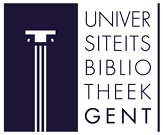Combining Ability Study for Grain Yield and Agronomic Traits of Quality Protein Maize (Zea mays L.) Inbred Lines Adapted to Mid-Altitude Agroecology of Ethiopia
Abstract
In spite of the importance of quality protein maize to alleviate protein deficiency, almost all maize varieties cultivated in Ethiopia are normal maize varieties, which are devoid of lysine and tryptophan. Perusing the combining ability of QPM inbred for grain yield and its components is vital to design appropriate breeding strategies for the development of nutritionally enhanced maize cultivars. A line x tester analysis involving 36 crosses generated by crossing 9 elite maize inbred lines with 4 testers were evaluated for different desirable agronomic traits during the 2019 main season at BNMRC and JARC. The experiment was conducted using alpha lattice design with 3 replications. The objectives were to determine the combining ability of quality protein maize inbred lines, adapted to mid altitude agroecology of Ethiopia for agronomic traits. The crosses were evaluated in alpha lattice design replicated 3 times. Analyses of variances showed significant mean squares due to crosses for almost all the traits studied. GCA mean squares due to lines and testers were significant (P<0.05 or P<0.01) for most studied traits. SCA mean squares were also significant for most attributes across locations. The comparative importance of GCA and SCA variances observed in the current study for most studied traits indicated the preponderance of additive genetic variance in governing these attributes. Only L3 was the best general combiner for grain yield. Inbred line L3, for days to anthesis and L5 for days to silking had negative and significant GCA effects. L5 and L6 displayed negative and significant GCA effects for plant and ear height. Crosses, L2xT4, L3xT4, L4xT4, L5xT2, L6xT3, L7xT2, L9xT1 and L9xT4 were good specific combiners for grain yield. In general, these genotypes help as a source of promising alleles that could be used for forthcoming breeding work in the development of quality protein maize cultivars with desirable traits.
Keywords
Full Text:
PDFReferences
Abate, T., Shiferaw, B., Menkir, A., Wegary, D., Kebede, Y., Tesfaye, K., Kassie, M., Bogale, G., Tadesse, B. and Keno, T (2015). Factors that transformed maize productivity in Ethiopia. Food security, 7(5), 965-981.
Ahmed, S., Begum, S., Islam, A., Ratna, M., & Karim, R.,2017. Combining ability estimates in maize (Zea Mays L.) through Line x tester analysis. Bangladesh Journal of Agricultural Research, 42(3), 425–436.
Alamerew, S. and Warsi, M (2015). Heterosis and combining ability of sub-tropical maize inbred lines. African Crop Science Journal, 23: 123-133.
Anderson AD, Miranda GV, De Lima RO, Goncalves Chaves L, Gomes e Gama EE (2012). Genetic parameters and predictive genetic gain in maize with modified recurrent selection method. Chilean Journal of Agricultural Research 72(1):33-39.
Arsode P., Murali Krishna K., Sunil N., Sree V., Ravi Charan A (2017). Combining ability and heterosis studies for grain yield and its components in hybrids of quality protein maize (Zea mays L.). International Journal of Current Microbiology and Applied Sciences 6(12): 2538–2545.
Assefa, B.T., Chamberlin, J., Reidsma, P., Silva, J.V. and van Ittersum, M.K (2020). Unravelling the variability and causes of smallholder maize yield gaps in Ethiopia. Food Security, 12(1),83-103.
Begum, S., Alam, S.S., Omy, S.H., Amiruzzaman, M. and Rohman, M.M (2018). Inheritance and combining ability in maize using a 7x7 diallel cross. Journal of Plant Breeding and Crop Science, 10(9), 239-248.
Berhanu T (2009). Heterosis and combining ability for yield, yield related parameters and stover quality traits for food-feed in maize (Zea mays L.) adapted to the mid-altitude agroecology of Ethiopia. MSc. Thesis. Haramaya University, Haramaya, Ethiopia.199.
Beyene A (2016). Heterosis and combining ability of mid-altitude quality protein maize (Zea mays L.) inbred lines at Bako, Western Ethiopia. MSc Thesis. Haramaya University, Haramaya, 158.
Bitew T (2016). Heterosis and Combining Ability of Mid-Altitude Maize (Zea mays L.) Inbred Lines for Grain Yield, Yield Related Traits and Reaction to Turcicum Leaf Blight (Exserohilum turcicum Leonard and Suggs) at Bako, Western Ethiopia. MSc. Thesis. Haramaya University, Haramaya, Ethiopia. 28-80.
Bitew T, Mideksa D, Temesgen D, Belay G, Girma D, Dejene K, Dagne W, Adefiris T (2017). Combining ability analyses of quality protein maize (QPM) inbred lines for grain yield, agronomic traits and reaction to grey leaf spot in mid-altitude areas of Ethiopia. African Journal of Agricultural Research 12(20):1727-1737.
Dabholkar, A.R (1999). Elements of biometrical genetics. Revised and enlarged edition, Concept Publishing Company. New Delhi, India.
Dagne W, BS Vivek, and MT Labuschagne. 2014. Combining Ability of Certain Agronomic Traits in Quality Protein Maize under Stress and Nonstress Environments in Eastern and Southern Africa. Crop Sci. 54:1004–1014.
Dagne W, Habtamu Z, Temam H, M. T. Labuschagne and H. Singh (2007). Heterosis and combining ability for grain yield and its components in selected maize inbred lines. South African Journal of Plant and Soil, 24 (3): 133-137.
Darrigues A, Buffard G, Lamkey KR and Scott MP (2005). Variability and genetic effects for tryptophan and methionine in commercial maize germplasm. Maydica. 50: 147-156.
Dufera T,. Tesso, D., and Azmach, D (2017). Combining Ability, Heterosis and Heterotic Grouping of Quality Protein Maize (Zea mays L.) Inbred Lines at Bako, Western Ethiopia (M.Sc. thesis, Haramaya University).
Dzanku, F. M., Jirström, M., & Marstorp, H (2015). Yield gap-based poverty gaps in rural sub-Saharan Africa. World Development, 67,336–362.
El-Shamarka, S.A., Abdel-Sattar, M. and El-Nahas, M (2015). Heterosis and combining ability for yield and its components through diallel cross analysis in maize (Zea mays L.). Alex. J. Agric. Res, 60(2):87-94.
Fan X, Chen H, Tan J, Xu C, Zhang Y, Luo L, Huang Y, Kang M (2008). Combining abilities for yield and yield components in maize. Maydica. 53: 39-46.
Fan, X.M., Y.M. Zhang, W.H. Yao, H.M. Chen, J. Tan, C.X. Xu, X.L. Han, L.M. Luo, and M.S. Kang. 2009. Classifying maize inbred lines into heterotic groups using a factorial mating design. Agron. J. 101:106–112.
Gemechu G (2019). Combining ability and heterosis in maize inbred lines (zea mays L.) For yields in mid altitude sub-humid agroecology of Ethiopia (Master of Science thesis, university of Nigeria).
Gemechu, G., Azmech, G. and Abu, N.E (2020). Combining ability of maize inbred lines (Zea mays L.) for yields in mid altitude sub-humid Agroecology of Ethiopia. African Journal of Plant Science, 14(6):231-242.
Gideon J. Synrem, Shailesh Marker and P. W. Ramteke (2017). Gene Action and Combining ability analysis for Grain yield and Quality parameters in Sub-tropical Maize (Zea mays L.). Vegetos 30(Special) doi: 10.5958/2229-4473.2017.00048.9
Girma C., Sentayehu A., Berhanu T., & Temesgen M (2015). Test Cross Performance and Combining Ability of Maize (Zea mays L.) Inbred Lines at Bako, Western Ethiopia, Global Journal of Science Frontier Research: D Agriculture and Veterinary 15:4-6.
Gomez, A.K. and Gomeze, A.A (1984). Statistical Procedure for Agricultural Research. 2nd edition. John Wiley and Sons. New York.
Kamara, M. M., El-degwy, I. S. and Koyama, H (2014). Estimation combining ability of some maize inbred lines using line x tester mating design under two nitrogen levels. Australian Journal of Crop Science, 8:1336-1342.
Kanagarasu, S., Nallathambi, G. and Ganesan, K.N., 2010. Combining ability analysis for yield and its component traits in maize (Zea mays L.). Electronic Journal of plant breeding, 1(4):915- 920
Kassie, B., van Ittersum, M., Hengsdijk, H., Asseng, S., Wolf, J., & Rötter, R. P (2014). Climate-induced yield variability and yield gaps of maize (Zea mays L.) in the Central Rift Valley of Ethiopia. Field Crops Research, 160, 41–53.
Kempthorne, O (1957). An introduction to genetic statistics, John Wiley, New York. 457.
Legesse, B.W., Pixley, K.V. and Botha, A.M (2009). Combining ability and heterotic grouping of highland transition maize inbred lines. Maydica, 54(1):9-14.
Lemi, B., Sentayew, A., Ashenafi, A. and Gerba, D (2018). Genotype x environment interaction and yield stability of Arabica coffee (Coffee Arabica L.) genotypes, 13(4): 210-219.
Maqbool, M.A., Beshir Issa, A. and Khokhar, E.S., 2021. Quality protein maize (QPM): Importance, genetics, timeline of different events, breeding strategies and varietal adoption. Plant Breeding.
Matin, M. Q. I., Rasul, M. G., Islam, A. K. M. A., Mian, M. A. K., Ivy, N. A., & Ahmed, J. U. (2016). Combining Ability and Heterosis in Maize (Zea mays L.). American J. Bio Sci.4(6), 84–90.
Melkamu E, Chale L, Abyneh Sh & Mekuanint A (2020). Combining ability performance and heterotic grouping of maize (Zea mays) inbred lines in testcross formation in Western Amhara, North West Ethiopia, Cogent Food & Agriculture, 6:1, 1727625.
Mohamed MK, Ibrahim SE, Hiroyuki K (2014). Estimation combining ability of some maize inbred lines using line × tester mating design under two nitrogen levels. Australian Journal of Crop Science 8(9):1336-1342.
Mosisa, W., Legesse, W., Berhanu, T., Girma, D., Girum, A., Wende, A., … Getachew, B (2012). Status and future direction of maize research and production in Ethiopia (pp. 17–23). Addis Ababa.
Pandit, M.B., S.U. Charjan, S.R. Kamdi, S.R. Patil, P.Z. Rahangdale, M.K. Moon and D.Y. Upadhyay (2019). Performance of double cross hybrids in maize (Zea mays L.) J. Soils and Crops, 29 (1) : 146-151.
Priya, D., Ram, L., Kumar, S., Kumar, A., Jakhar, D.S. and Singh, R (2015). Development and evaluation of quality protein maize (QPM) hybrids for Eastern Uttar Pradesh.
Rahman, H. Asif, A, Zahir, S., Iqbal, M., Noor, M. and Amanullah (2013). Line x Tester analysis for grain yield and yield related traits in maize variety sarhad-white. Pak. J. Bot., 45(si): 383- 387.
Rawi (2016). Relative performance and combining ability for yield and yield components in maize by using full diallel cross. International Journal of Current Research, 8(9), 37721–37728.
SAS Institute, Inc (2014). SAS proprietary Software and Version 9.3, SAS Inst., Cary, NC.. SAS Institute, Inc, CARY, NC, Canada.
Sharma, S., Narwal, M.S., Kumar, R., Dass, S (2004). Line x tester analysis in maize Forage Research, 30:28-30.
Shushay W (2011). Line x tester analysis of maize (Zea mays L.) inbred lines for grain yield and yield related traits in central rift valley of Ethiopia. MSc. Thesis, Haramaya University, Haramaya, Ethiopia.
Shushay W (2014). Standard Heterosis of Maize (Zea mays L.) Inbred Lines for Grain Yield and Yield Related Traits in Central Rift Valley of Ethiopia. Journal of Biology, Agriculture and Healthcare, 4(23):31-37
Shushay W, Habtamu Z, and Dagne W (2013). Line x tester analysis of maize inbred lines for grain yield and yield related traits. Asian plant Science Research, 3: 12-19.
Singh, R.K., and Chaudhary, B.D (1985). Biometrical methods in quantitative genetic analysis. Kalyani Publishers New Delhi, India.
Sultana R, Jamil S, Aslam M, Shahzad R, Fatima R, Maqbool MA and Iqbal MZ ( 2019). Overview of quality protein maize and molecular breeding approaches for its development. International Journal of Biosciences 14,533–542.
Taffesse,A. S., Dorosh, P.A.&Gemessa, S.A (2012). Crop production in Ethiopia: Regional patterns and trends. In Food and Agriculture in Ethiopia: Progress and Policy Challenges, ed. Paul A. Dorosh and Shahidur Rashid. Chapter 3, 53–83. Philadelphia, PA: University of Pennsylvania Press.
Tesfaye, D., Abakemal, D. and Habte, E (2019). Combining Ability of Highland Adapted Double Haploid Maize Inbred Lines using Line X Tester Mating Design. East African Journal of Sciences, 13(2):121-134.
Tessema T, Sentayehu A, Dagne W, and Temesgen M (2014). Test Cross Mean Performance and Combining Ability Study of Elite Lowland Maize (Zea mays L.) Inbred Lines at Melkassa, Ethiopia. Advanced Crop Science Technology, 2: 140.
Tolera, K., Mosisa, W. and Habtamu, Z (2017). Combining ability and heterotic orientation of mid altitude sub-humid tropical maize inbred lines for grain yield and related traits. African Journal of Plant Science, 11(6): 229-239.
Woldu M., Habtamu Z., Mandefro N (2020). General and Specific Combining Ability of Maize (Zea mays L.) Inbred Line for Grain Yield and Yield Related Traits Using 8×8 Diallel Crosses. American Journal of BioScience. 8, (3):45-56.



























